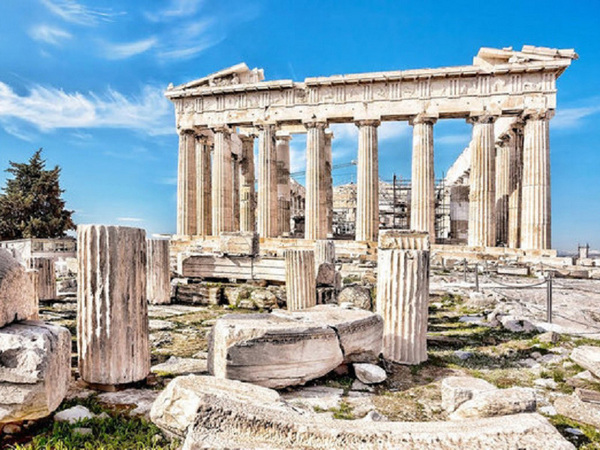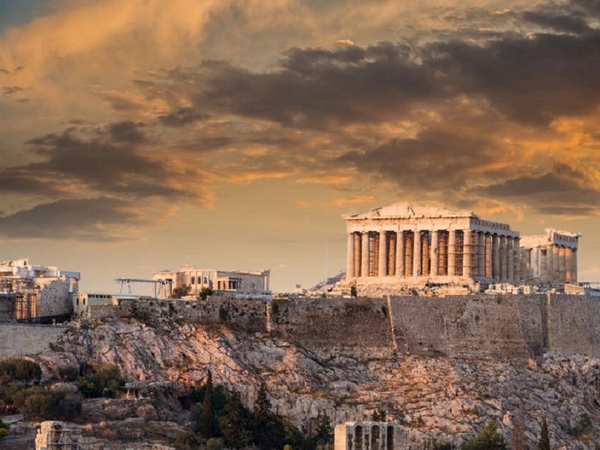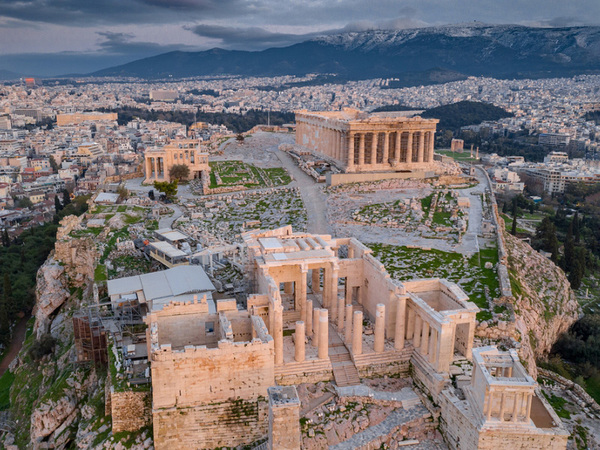The Acropolis of Athens stands as an iconic testament to the city's rich history and cultural significance, attracting around seven million curious visitors each year.
Immersed in a tapestry of myths, tales, and captivating historical anecdotes, the Acropolis unfolds as a captivating journey through time. Let's delve into 9 lesser-known but fascinating facts about this UNESCO World Heritage Monument.

1. It Was Built in Prehistoric Times
With a remarkable age of 2460 years, the Acropolis has been a hub of civilization since the 4th century BC. Inheriting the ruins of the Mycenaean Acropolis, it became the sacred ground where Athenians revered their past, with a Mycenaean tomb gaining fame as the final resting place of Cecrops, the Athenian king.
2. The Parthenon was a Temple, Church, and Even a Mosque during its Lifetime
Originating as a temple devoted to the Greek goddess Athena, the Parthenon underwent a transformative journey throughout history. Embracing Christianity, it evolved into a church, and during the Turkish invasion, it took on the role of a mosque, showcasing its adaptive cultural significance.

3. It was Blown Up.
The turbulence of the 1600s witnessed the Parthenon being repurposed as a storage facility for explosives during the Venetian-Turkish war. Unfortunately, a catastrophic event unfolded as these explosives detonated, causing substantial damage to the building's interior.
4. A Huge Statue of Athena Stood on the Acropolis
In ancient times, a colossal bronze statue crafted by Phidias graced the Acropolis, commemorating the goddess Athena for her pivotal role in the victory over the Persians at Marathon. A testament to artistic prowess and historical gratitude, the statue once dominated the landscape.
5. The Acropolis was a Colorful Place
Contrary to the common perception of pristine white and grey, the Acropolis, much like ancient Greece, was a vibrant canvas adorned with a myriad of colors. The Greeks embraced pigments, infusing life into their buildings and monuments, a tradition also observed in the vibrant hues of the Parthenon.

6. The Statues Above the Columns were Handcarved
The Parthenon's intricate carvings narrate tales of divine battles and the birth of Athena. Meticulously hand-carved, one side depicts the clash between gods and giants, while the other immortalizes the struggles between Athena and Poseidon, creating a visual epic etched in stone.
7. Greece Wants Their Carvings Back
Scattered across the globe, the original carvings, known as the Elgin Marbles, find homes in prestigious museums like the Louvre, British Museum, and the National Museum of Copenhagen. Despite Greece's persistent efforts over the last 150 years, these cultural treasures remain elusive, residing far from their place of origin.
The ongoing saga of the Elgin Marbles reflects a historical and cultural tug-of-war, with Greece seeking the return of these priceless artifacts.
8. The Carvings were Carried Away and Shipwrecked
In the 1800s, Lord Elgin, a British nobleman, orchestrated the transportation of these remarkable carvings to England with the Turkish authorities' consent. However, fate intervened as one of the vessels met a watery demise, leaving the Elgin Marbles scattered on the seafloor and forever associated with an unforeseen maritime tragedy.
9. The Rocks on the Acropolis are Slippery
Centuries of footfall have rendered the ground on the Acropolis smooth and, consequently, slippery. As you traverse this historical marvel, don a pair of comfortable shoes and tread with care, ensuring a safe exploration of this ancient wonder.